Minecraft is a game beloved by millions for its endless possibilities, yet nothing ruins the experience like persistent lag—especially when using performance optimization mods like Lithium. In this comprehensive guide, we’ll explain why Minecraft lags, how Lithium affects gameplay, and most importantly, how to fix Minecraft lag once and for all. Whether you're playing on a low-end PC or a powerful gaming rig, these tips will help you eliminate lag and enjoy seamless block-building adventures.
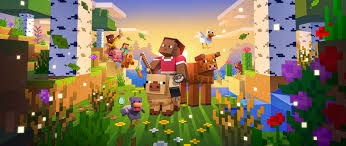
What Causes Minecraft Lag (Even With Lithium)?
Before we dive into solutions, it's important to understand the common causes of Minecraft lag, even when mods like Lithium are installed:
Insufficient RAM Allocation
High Render Distance
Too Many Entities or Mods
Outdated Graphics Drivers
Network Latency (Lag spikes on servers)
Inefficient Mod Configuration
While Lithium is a powerful optimization mod that boosts the game’s logic performance, it does not automatically eliminate all lag issues, especially if your system is misconfigured or underpowered.
Method 1: Allocate More RAM to Minecraft
Minecraft is a Java-based game, and by default, it only uses a small portion of your available memory. If you’re experiencing lag—especially stuttering or freezing when loading chunks—chances are your game is starving for RAM. Even with Lithium installed, inadequate memory allocation can create severe performance bottlenecks.
How to Increase RAM Allocation in Minecraft Launcher
Open Minecraft Launcher.
Click on "Installations".
Select your Minecraft profile using Lithium.
Click "More Options".
Under JVM Arguments, change -Xmx2G to -Xmx4G or -Xmx8G depending on your available RAM.
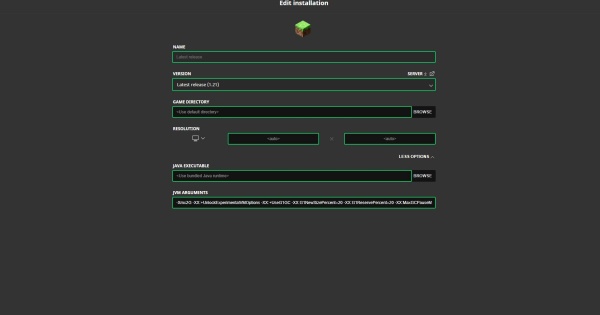
Click Save and launch the game.
Don’t allocate all available RAM—leave at least 2GB for system processes.
Method 2: Optimize Render Distance and Video Settings
Even with Lithium, lag can originate from Minecraft’s graphical settings. If your render distance is too high or you have resource-heavy features enabled, your GPU will struggle to keep up, resulting in FPS drops and sluggish gameplay. Tuning these settings can drastically improve your gaming experience without requiring hardware upgrades.
Best Video Settings for Low-Lag Minecraft
Render Distance: 8 chunks or less
Graphics: Fast
Smooth Lighting: Off
Particles: Minimal
Clouds: Off
VSync: Off
Max Framerate: Unlimited
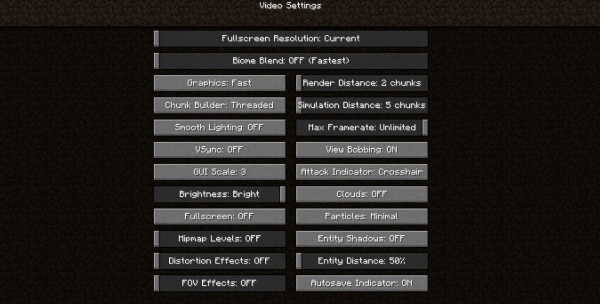
Reducing render distance and disabling visual enhancements can drastically improve performance.
Method 3: Use Sodium Alongside Lithium
Lithium excels in logic and AI optimizations, but it doesn’t affect how graphics are rendered. That’s where Sodium comes in. By combining both mods, you can achieve smoother gameplay through improved CPU and GPU efficiency. This method is perfect for players who want top-tier performance with minimal setup.
How to Install Sodium and Lithium Together
Download both Sodium and Lithium from Modrinth or CurseForge.
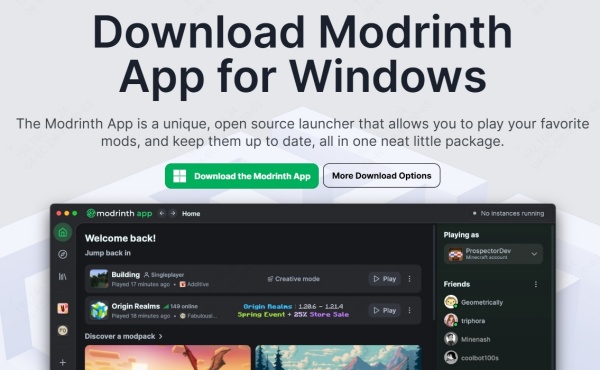
Install Fabric Loader if you haven't already.
Move the .jar files into your .minecraft/mods folder.
Launch Minecraft with the Fabric profile.
This duo can dramatically boost FPS and lower tick delays, creating a buttery smooth experience.
Method 4: Remove Lag-Causing Mods and Plugins
More isn’t always better when it comes to Minecraft mods. Even with Lithium installed, having too many mods—or ones that conflict—can result in severe lag. Cleaning up your mod list helps ensure that only the most optimized and compatible mods are running.
Tips to Manage Your Modpack
Audit your mods: Remove those you don't use.
Use tools like Spark or LagGoggles to find lag sources.
Check mod compatibility with Lithium and Fabric.
Server-side plugins like Essentials, WorldEdit, and Dynmap can consume resources and slow down performance.
Method 5: Clean Your System and Update Drivers
Lag isn’t always Minecraft’s fault. Sometimes, the culprit is your system itself—particularly outdated GPU drivers, junk files, and background apps hogging resources. Keeping your system clean and drivers updated ensures optimal performance for gaming.
Steps to Optimize Your PC
Clear Temp Files using Disk Cleanup.
Disable Startup Apps from Task Manager.
Defragment HDDs (skip for SSDs).
Update Graphics Driver using Driver Talent – a powerful tool that automatically detects and updates outdated or missing drivers.
Using Driver Talent
Download and install Driver Talent.
Launch and click Scan.
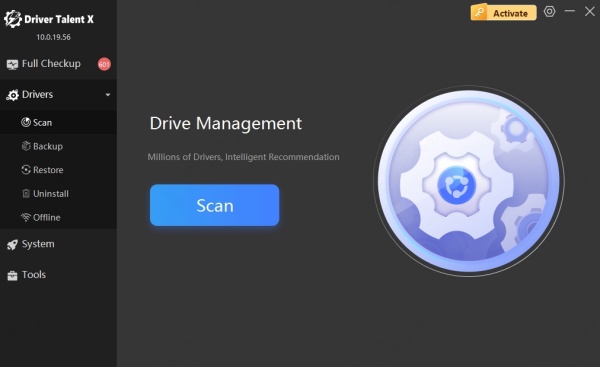
Let it detect outdated GPU drivers.
Click Repair Now and restart your PC.
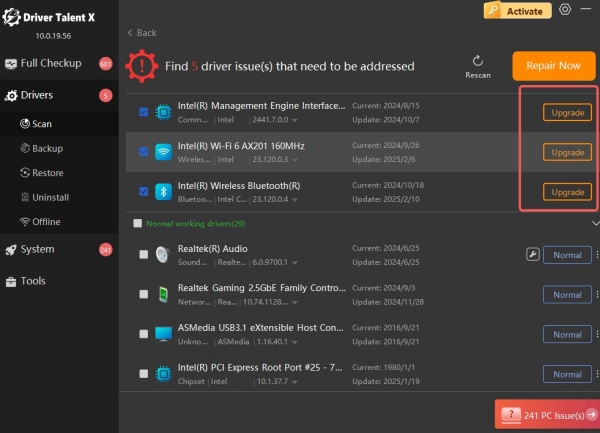
Method 6: Improve Internet Connection for Online Play
If you're experiencing lag only during multiplayer, then your problem may be network-related, not performance-based. High ping, unstable connections, and bandwidth-hungry applications can all impact your online Minecraft sessions, making your game feel slow and unresponsive.
Steps to Reduce Network Lag
Use a wired Ethernet connection.
Avoid using Wi-Fi during high-traffic hours.
Close background apps that use bandwidth (e.g., Discord, Chrome).
Switch to servers close to your region.
Use a gaming VPN for better routing.
Minecraft’s performance over multiplayer is heavily affected by latency and ping, not just game logic.
Method 7: Use Performance-Enhancing Settings in Lithium
Lithium comes with several hidden performance tweaks that aren't always enabled by default. By editing the config file, you can unlock more powerful optimizations tailored to your world and play style. This method is best for players who are comfortable editing config files and want to squeeze every bit of performance out of their setup.
1. Accessing Lithium’s Config
2. Navigate to .minecraft/config/lithium.properties.
3. Open in a text editor.
4. Set the following:
entity_collisions.enabled=true
world.threaded_worldgen=true
mob_ai.optimizations=true
Be careful not to disable important features. Always backup your configs before editing.
Method 8: Use a Lightweight Resource Pack
High-resolution texture packs may look beautiful, but they come at a steep performance cost. Switching to a lightweight resource pack can free up GPU resources and boost frame rates significantly—without compromising the core aesthetic of Minecraft.
Recommended Packs for Performance
Bare Bones
Faithful 32x
PixelCons
Lighter packs preserve aesthetics while boosting FPS by up to 30%.
Method 9: Allocate CPU Priority to Minecraft
Minecraft often competes with other background processes for CPU power. Increasing its priority ensures it gets more of the CPU’s attention, leading to smoother frame rates and reduced stuttering—especially during intense gameplay like redstone contraptions or mob battles.
Steps to Set Priority
Open Task Manager (Ctrl + Shift + Esc).
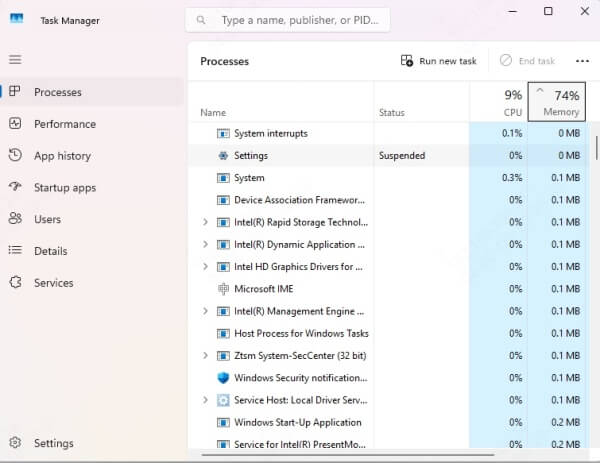
Go to Details tab.
Find javaw.exe.
Right-click → Set priority → High.
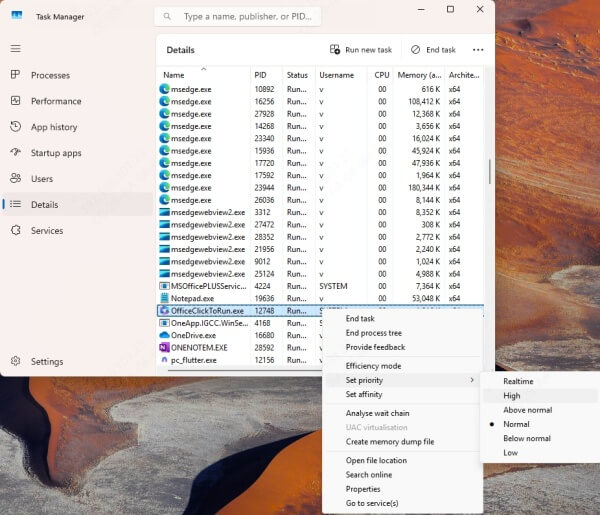
Don’t use “Realtime”—it can destabilize your system.
Bonus Tip: Use OptiFine (if not using Sodium)
Not everyone wants to use Fabric mods. If you’re on the vanilla launcher or prefer Forge, OptiFine remains one of the best tools to increase FPS. It allows you to finely tune graphical settings, reduce render load, and add features like dynamic lighting and zoom—all with the potential to double your FPS.
Download the latest OptiFine release for your Minecraft version.
Double-click the .jar file to install.
Launch via the OptiFine profile.
Use its custom settings to maximize performance.
Conclusion: Lag-Free Minecraft With Lithium and Smart Tweaks
Minecraft lag is frustrating but entirely fixable. Whether you’re running Lithium, Sodium, or a vanilla setup, applying the right optimizations will lead to smoother gameplay, higher FPS, and less stutter. From adjusting RAM, video settings, and mods to updating drivers with Driver Talent, the solutions are within your reach.
